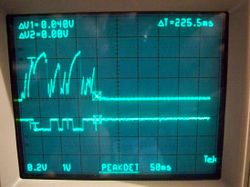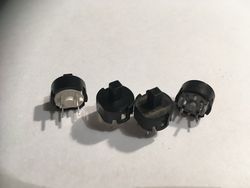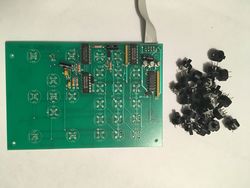Restoring 1220, 1225 and 1230 keypad
Description


- The 1220, 1225 and 1230 have a keypad interface for controlling them. The switches are tactile switches with a small spring. Over time they start to become extremely "bouncy". This is due to a number of factors, some including corrosion and weakening springs. Over time this will lead to problems such as the key pad being less responsive and the analyzer registering multiple presses. The following picture shows what the keypad is registering (Pic1).
Fix


- The switches that the keypad uses are still being manufactured today. They are C&K D6L90F1LFS. There is also the D6L90F2LFS, they are the exact same except the force required to push the buttons. One takes 1.3 Newtons and the other 2 Newtons (Pic3). The key pad has 26 of them. Replacing them with new ones will fix the excessive bouncing. When de-soldering the switches one has to be careful of burning the PCB and lifting pads because the traces are very small.
- Datasheet for D6L90F1LFS and D6L90F2LFS
Conclusion

- It is not known how long this fix will last, but it makes the unit usable again. After the replacement the signal is now clean after replacing the switches (Pic5).